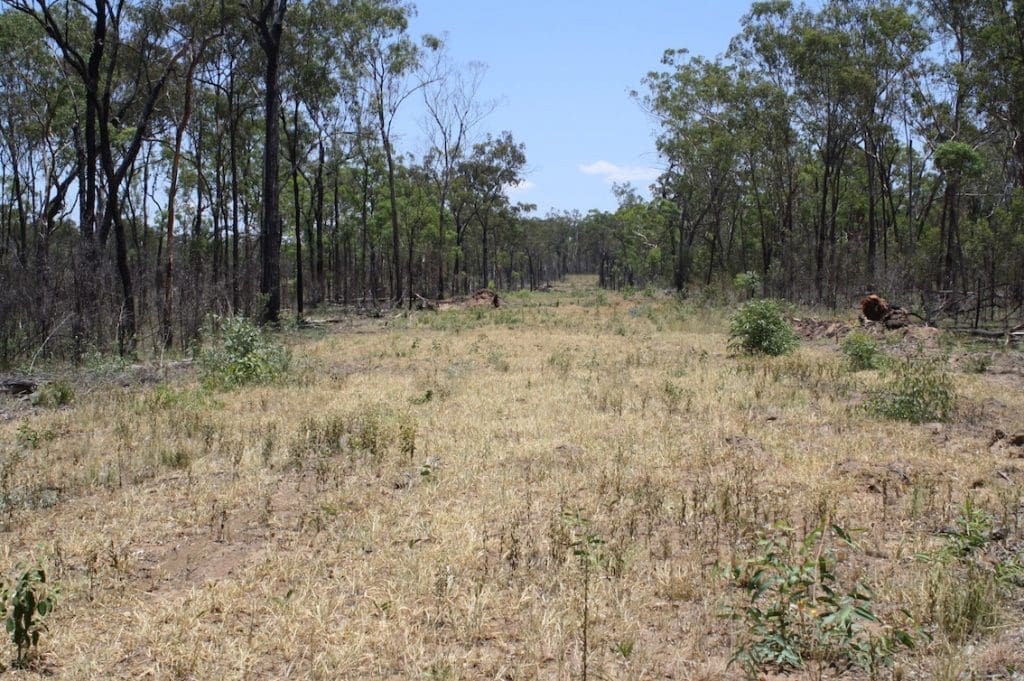Yesterday we asked how wide a fire break can be in Queensland, after a Central Queensland landholder was ordered to pay almost $1 million fines and Government legal expenses for building fire breaks up to 40 metres wide.
Following a destructive fire on his Eidsvold cattle property soon after buying it in 2011, Michael Baker sought advice from 32 Queensland Government staff before commencing work to create fire breaks on his 9242 hectare land holding.
His lawyer Tom Marland said Mr Baker received conflicting answers from Government officers on allowable widths, and ultimately drew from provisions within the Vegetation Management Act that indicate fire breaks can be “1.5 times the height of the tallest trees”.
The “1.5 times the tallest tree” is based on providing a buffer large enough so that if tree adjacent to a fire break burns and falls across the fire break, it will not cause the fire to continue on the other side of the fire break.
Working on an average tree height of 25m, Mr Baker developed fire breaks to a width of 40 metres and began clearing under Queensland’s self-assessable clearing codes without a permit.
Want to stay up to date with beef news? Click here to receive Beef Central’s free daily news email
Two years after commencing the clearing work, the Department notified Mr Baker to say his breaks were too wide, and that he had been illegally remnant vegetation without a permit, and then commenced actions to investigate and prosecute him
This week, Mr Baker was found guilty of breaching the Vegetation Management Act and illegally clearing remnant vegetation, earning him a fine of $267,000 and an order to pay Government’s investigation and court costs of some $750,000 – the biggest penalty in the 18 year history of the State’s Vegetation Management Act.
In the wake of that outcome Beef Central yesterday asked Queensland’s Department of Natural Resources and Mines if it could provide clarity to landholders on how wide a fire break is allowed to be.
The short answer? 10 metres is basically about as wide as fire breaks can be alongside a fence, road or vehicular track, according to the Department. If landholders believe clearing of greater widths is justified, a development permit will be needed.
The longer answer, as provided by a DNRM spokesperson, follows:
“Vegetation clearing on freehold land for the purposes of essential management can be undertaken under the Sustainable Planning Regulation 2009, including clearing for fire management lines and firebreaks.
“The Regulation allows:
- necessary fire management lines to be established “if the maximum width of the clearing for the fire management line is 10 metres”
- necessary firebreaks to protect infrastructure other than a fence, road or vehicular track, if the maximum width of the firebreak is equivalent to 1.5 times the height of the tallest vegetation adjacent to the infrastructure, or 20 metres, whichever is the greater; and
- necessary firebreaks to remove or reduce the imminent risk that the vegetation poses of serious personal injury or damage to infrastructure. An example of this may include a tree that has been damaged by a storm with broken branches overhanging areas used by people.
“If clearing within regulated vegetation for this purpose is greater than the essential management limitations, or covered by another exemption under the regulation, a development permit is required.”
In response to Mr Baker’s specific case, the spokesperson made the following remarks:
“Mr Baker contacted the department in 2011 to seek advice about managing vegetation on his property, but continued to illegally clear vegetation without a permit despite being given clear information about his responsibilities.
“Any landholder who is unsure of their requirements is encouraged to call the department on 135 VEG (13 58 34) to speak with a vegetation management officer or email vegetation@dnrm.qld.gov.au.”

